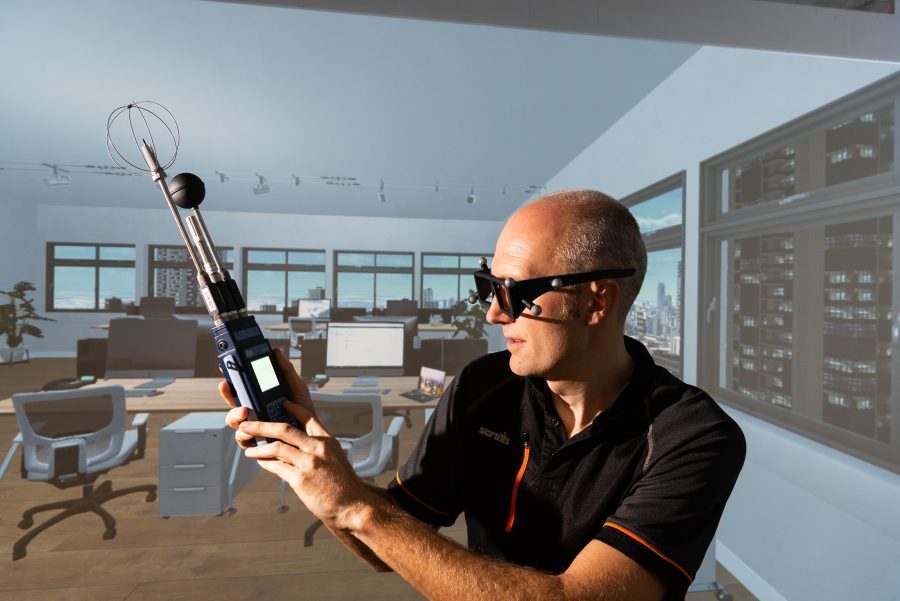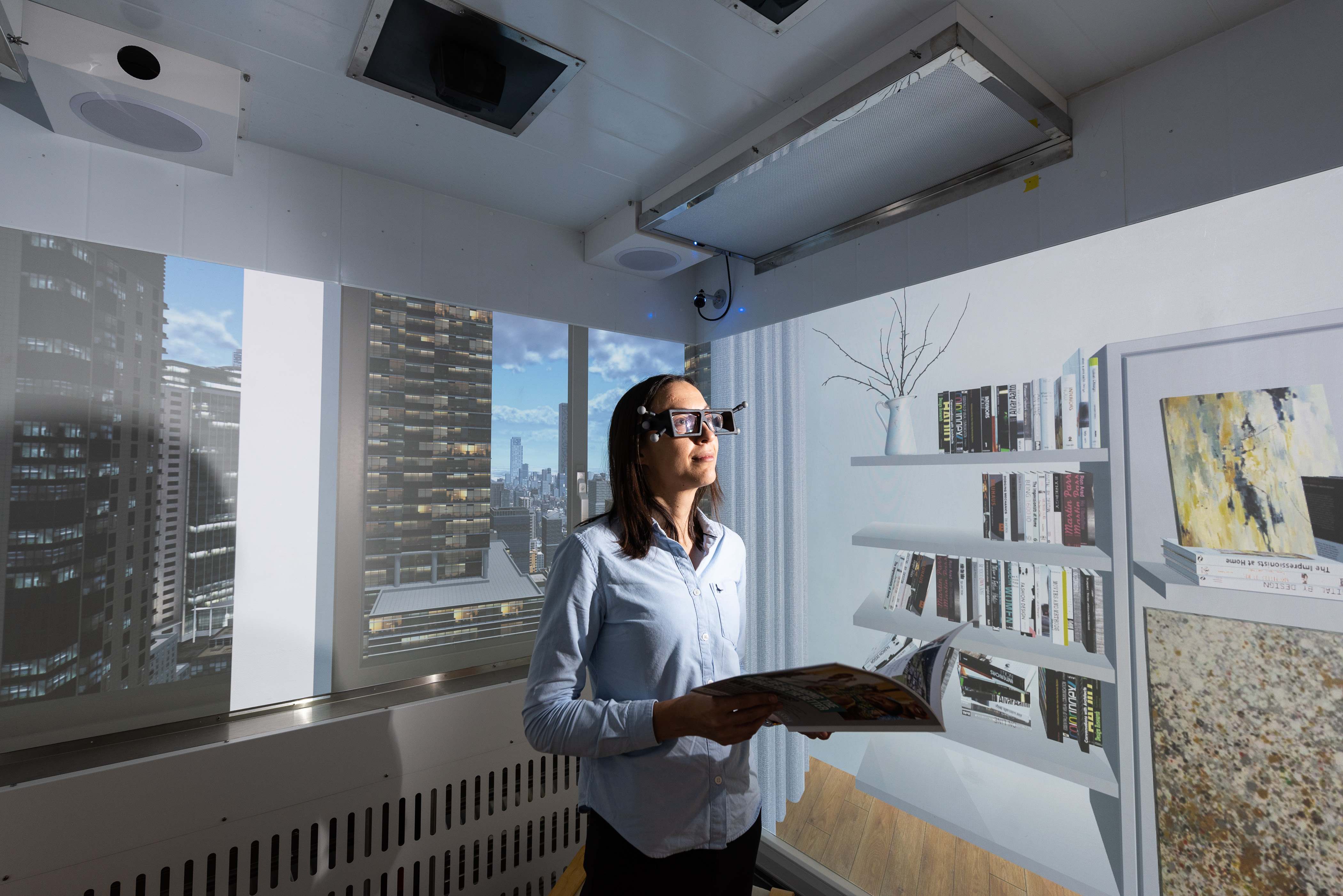
The VR room is used to simulate the effect of movement due to wind in high rise buildings.
- Human factors, comfort & productivity - how people respond to their environment, how to create structures that are comfortable and fit for purpose, how to design buildings to boost the mood of their occupants.
- Built environment - how to transform construction processes by making design focused on the needs of people using a building.
- Transport - what is the human response to vibrations, acceleration, deceleration and balance, and what level of movement is acceptable in a footbridge or train carriage.
- Vibration engineering - researching vibration of structures, machinery and other engineered facilities, and developing design recommendations to ensure human comfort.
- Health & wellbeing - how do people move, how do they respond to their surroundings
- Immersive reality - How to create an immersive experience for one or more people using state-of-the-art virtual reality technology aligned to the motion platform and other controls.




















